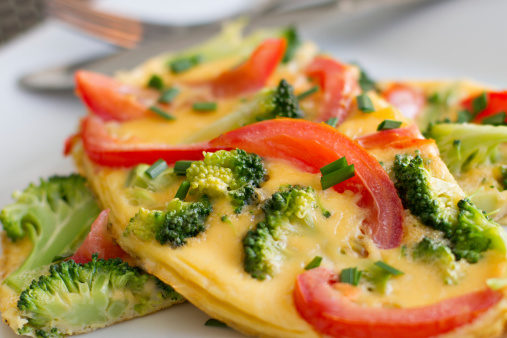With so many different trends popping up in nutrition, it may be hard to discern which diet programs are just out for their 15 minutes of fame and which are here to stay. It’s safe to say that one diet plan, however, will not be going away any time soon; in fact, its followers argue that their diet has been successful for 2.6 million years!
The Paleo Diet, named for the Paleolithic era (also known as the “Stone Age”), is based off of foods that made up our ancestors’ diets when they were hunter-gatherers. This not only means that processed sugars are off the menu, but other unexpected things, too, like potatoes, dairy, wheat/grains and legumes, including peanuts. The main foods that make up the Paleo Diet are grass-fed meats, wild-caught seafood, eggs, vegetables, fruits, nuts, seeds and natural oils like coconut oil or olive oil.
What are the benefits of such a diet? Some doctors say that following the Paleo Diet results in higher protein and fiber intake and lower carbohydrate intake. Combined, these factors may contribute to healthy weight loss, regulate digestion, prevent metabolic syndrome and improve some symptoms of various ailments, including hypertension and insomnia.
To make it easier for your customers to follow the diet, create a “Paleo-Approved” area in your store stocked with common Paleo items such as coconut oil, almond flour, various nut-butters, grass-fed jerky and all-natural fruit snacks. Certain snack and energy bars are Paleo if they contain only all-natural ingredients, like almonds and fruits or even grass-fed beef; bars with any grains, dairy or processed ingredients are not considered Paleo, no matter how healthy they may otherwise be. Supplements like vitamin D, fish oil and calcium are Paleo-approved and recommended, as well.
To satisfy their sweet tooth without sugar, Paleo Diet followers have become quite crafty in the kitchen. Hold a shopper recipe contest for the best Paleo dessert recipe featuring items in your store and have finalists bring in their finished products for a public tasting and judging! The winner gets a prize (store credit, for example), and your customers get to see just how delicious Paleo can be. Organize the recipes, as well as any other Paleo cooking ideas that feature your products, into a cookbook to display in your store for health-conscious home cooks to peruse. Repeat the process with a focus on appetizer, meal and snack recipes!
Schedule a free information session at your store with an “Eat This, Not That” vibe by showing your Paleo customers suitable and delicious replacements for their favorite forbidden foods. For example, soy-free dark chocolate is a great substitute for milk chocolate, which has dairy and sugar.
Give your prepared foods section a makeover, Stone Age style! Dedicate one day of each week (e.g., Paleo Wednesday) to offering your customers ready-to-eat meals made with fresh vegetables and meat or fish prepared with only Paleo-friendly ingredients, like coconut oil instead of vegetable oil and organic honey instead of white sugar. Include a list of ingredients on each package so your customers can be absolutely sure it adheres to their strict diet.
When it comes to the Paleo Diet, the more foods your customers know they can have, the more they will buy. Take the time to understand the ins and outs of Paleo, so when curious new “cavemen” come to you for advice, you can confidently guide them in the right direction. WF
Published in WholeFoods Magazine, January 2014









